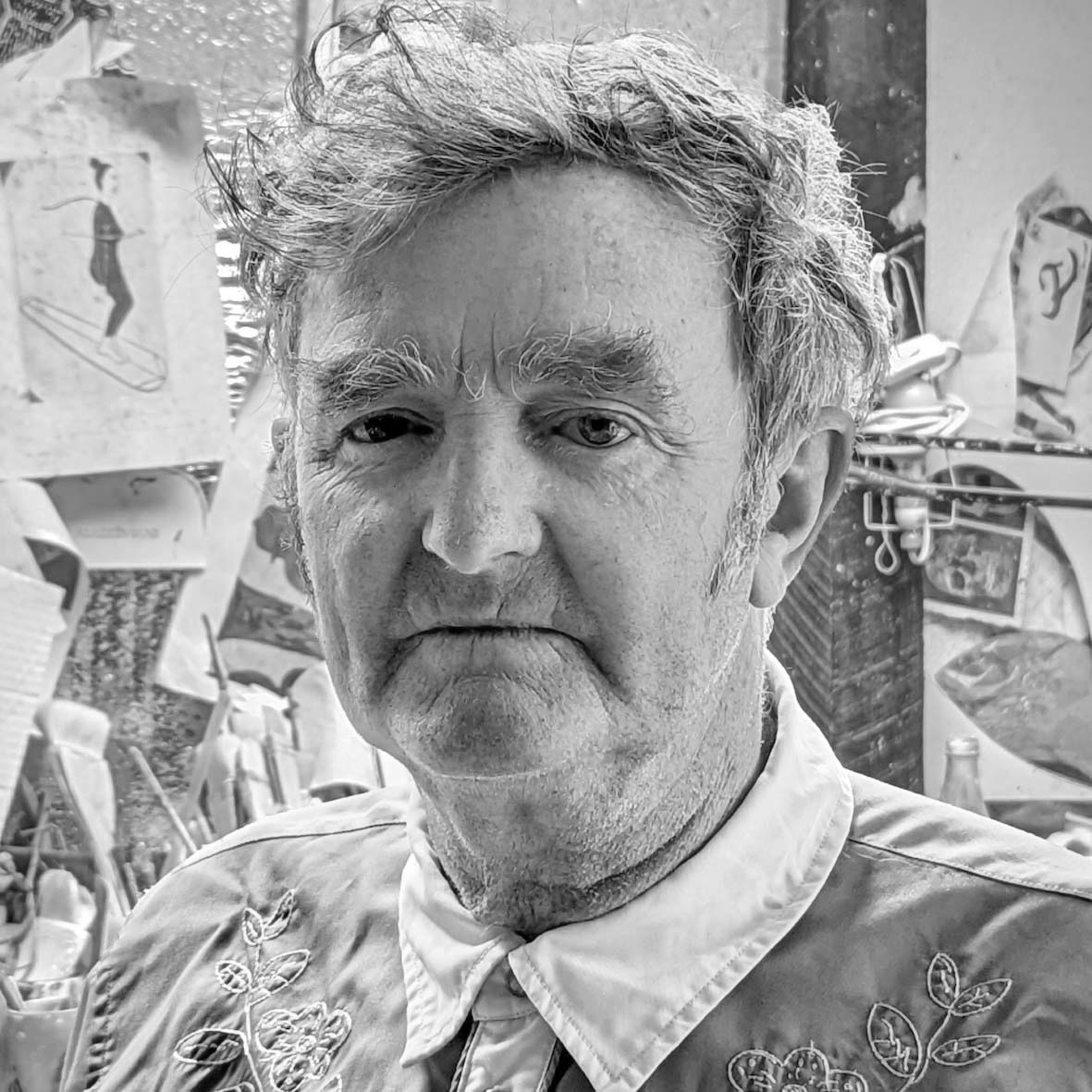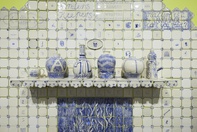Gerry Wedd
Kaurna/Ngarrindgeri Country, Port Elliot, South Australia
2023
Displayed 2023 at Art Gallery of New South Wales

Gerry Wedd
Born 1957, Kaurna Country, McLaren Vale, South Australia.
Lives and works Kaurna/Ngarrindgeri Country, Port Elliot, South Australia
Gerry Wedd explores how pottery can be a receptacle for the dense cross currents of past and present, and high and low cultures. He explains, ‘I have been making things from clay for most of 50 years, having been introduced to it by my mother, who made hundreds of pieces of kitsch ceramics. I drew on to the surface of pots before I had made any. My interest in clay has been sustained by the history of pottery and in its hitherto sidelining to the world of decorative art. I am an advocate of the Trojan Horse potential of domestic things. Social commentary has been key to my practice since I worked for Mambo. It remains an impetus for much of what I make.’
Photograph: Mickey Mason
Artist text
by Ken Gelder
Gerry Wedd’s handcrafted blue-and-white ceramic tiles arrive on this wall from his studio at Port Elliot, on the southern coast of South Australia. But they also arrive at the end of a long historical journey connected to ports scattered around the world. In the ninth century, potters in Basra, the port city of Iraq, began to imitate the blue-and-white porcelain produced in China since the Tang dynasty. They created a colour, cobalt blue, to decorate their works.
Chinese potters began to use cobalt blue later on; and, as trade routes with Europe were established, their work began to flow into the West. The Dutch East India Company brought millions of Chinese blue-and-white ceramics to the Netherlands. Delft, a coastal town south of Amsterdam, established its own factory in the early 1600s, specialising in blue-and-white decorative tiles – Delftware – for the kitchens and bathrooms of the wealthy middle classes.
The demand for decorative tiles soon spread across Europe: influencing, for example, Lisbon’s azulejos, used extensively on building interiors after the earthquake of 1755. Sino-Dutch ceramic techniques eventually came to English towns, too. The Chinese-themed blue-and-white willow pattern was especially popular, a sentimentalised form of chinoiserie in the West; the first English willow patterns came out of Staffordshire factories around the time the First Fleet arrived in Sydney Harbour.
Wedd’s tiles ride the wave of this global circulation of blue-and-white ceramics. They also decorate interior domestic spaces: we might find them not just in bathrooms and kitchens, but anywhere in the house. The tiles here are arranged to form an ornate wall around a ceramic fireplace, a recognisably homely place. But the shape of the arrangement, the prominent urns on either side, and the elaborate curled edge-work all invoke the lost grandeur of those earlier Portuguese azulejos.
These days, tiles are generally mass produced, but Wedd’s tiles (hundreds of them) are handcrafted in the old way. The willow pattern was factory reproduced on homeware, an example of kitsch in the decorative arts. ‘Kitsch’ shares an etymology with ‘kitchen’: it announces, precisely, the homeliness of mass reproduction. An earlier catalogue of Wedd’s work was called Kitschen Man, an ironic nod to a 1981 song by The Reels about a man who works in the kitchen but feels he doesn’t quite belong there. (Some of the lyrics are on these tiles.) This, and the careful handcrafting of work on such a large scale, makes Wedd what we might think of as an ‘anti-kitsch kitsch’ artist.
Tile-scape designs in building interiors once offered a sense of comfort, definition, and order. But Wedd’s images are fragmented, a random assemblage of things, song lyrics, phrases, thoughts, injunctions. They can be ordinary (an iron, a sofa), or Gothic and threatening (‘beware of darkness’), sentimentalised (like kitsch), anxious, desiring (‘let me get what I want’): the flotsam and jetsam of an historically shaped unconscious scattered around a cool fireplace against a glowing yellow wall.
Gerry Wedd
3min
Auslan - Gerry Wedd
2min
About the work of Gerry Wedd in The National 4.
Artist's acknowledgements
This project has been assisted by the Australian Government through the Australia Council for the Arts, its funding and advisory body.



